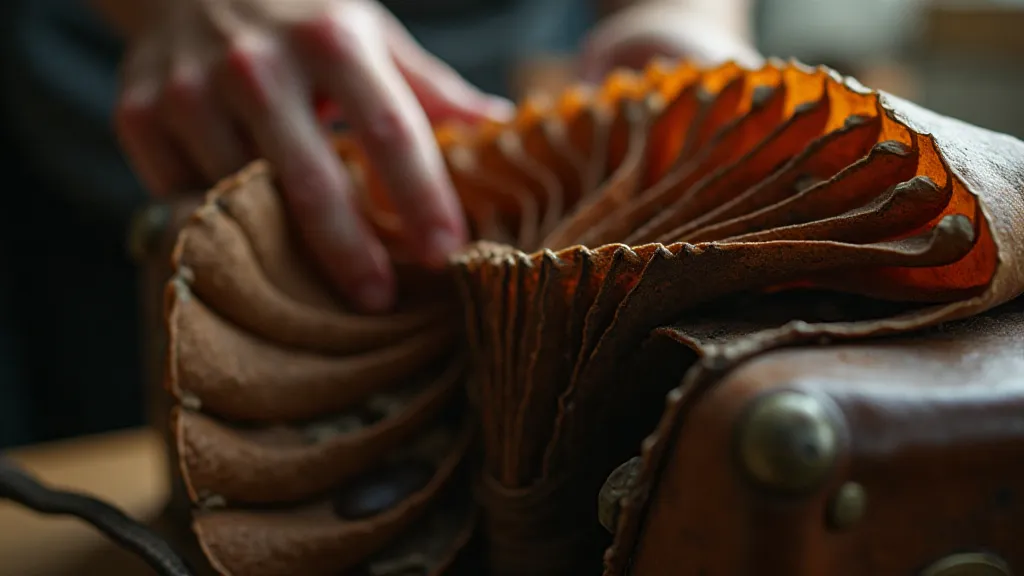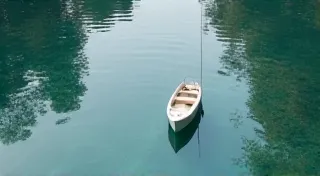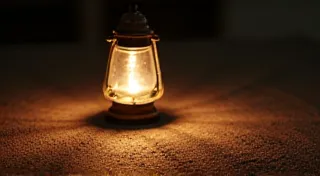Ephemeral Sculptures: Building with Attraction and Dissociation
There’s a certain melancholy that clings to old accordions. Not the vibrant, boisterous joy they’re meant to unleash, but a quieter, more poignant feeling – a recognition of time passed, music silenced, and hands that once coaxed melodies from their bellows. I spent a childhood surrounded by my grandfather’s collection; a rambling, dusty room overflowing with instruments rescued from flea markets and estate sales. He wasn't a musician, not really. He was a collector of stories, embodied in wood, metal, and leather. Each accordion whispered of a life lived, a celebration hosted, a memory formed. And lately, those same principles – attraction, release, the beauty of impermanence – have begun to inform my explorations with rare earth magnets.
The link between these seemingly disparate worlds – a battered accordion and the precise, invisible force of magnetism – isn't immediately obvious. But consider the accordion itself. It's a delicate balance of opposing forces. Steel reeds vibrate against carefully calibrated airflow. Leather bellows expand and contract, creating a rhythmic push and pull. It's a structure built on tension, reliant on the precise interaction of numerous individual components. And, crucially, it’s fragile. A single cracked reed, a split bellows, and the music stops. The structure collapses. The beauty isn’t just in the sound, but in the precariousness of its existence. It’s a fleeting moment of harmony against the relentless march of entropy.

The Physics of Fleeting Form
My interest in rare earth magnets, particularly neodymium magnets, emerged from this fascination with transient structures. Unlike static monuments built to last, I wanted to explore creations that existed only for a moment, dictated by the controlled release of magnetic force. The initial experiments were simple: building towers of steel ball bearings held aloft by strategically placed magnets, knowing they would inevitably topple. The inevitable collapse isn’t a failure, but an essential part of the process – a visual representation of the ephemeral nature of existence. It’s a study in forces—how they interact, how they can be manipulated, and how they ultimately dictate the fate of even the most seemingly stable arrangements. This understanding also led me to appreciate the subtle, often unseen, ways magnetism influences our world, prompting me to delve into related topics like how magnetic fields might be perceived and even manipulated, leading to my interest in understanding the ways magnetism can create optical illusions.
The inherent instability is what makes these projects so captivating. It demands constant adjustment, a delicate dance between pushing and releasing. It's a tangible representation of the scientific principles at play: magnetic fields, repelling forces, the ever-present influence of gravity. These aren’t just experiments; they’re mindful exercises, teaching patience and an appreciation for the unexpected. There's a certain meditative quality to observing a magnetic structure slowly self-destruct, witnessing the elegance of physics in action. The process reminds me of the inherent patterns found in nature, patterns governed by physical laws that are both predictable and utterly surprising.
Building with Attraction and Release
One particularly compelling project involved creating a "magnetic web" using thin wires and strategically positioned magnets. The goal wasn't a permanent structure, but a shimmering, intricate lattice that would briefly exist before slowly dissolving as the magnets subtly shifted. The challenge lay in managing the magnetic forces – too strong, and the web would become rigid and unyielding; too weak, and it would collapse immediately. It was a constant negotiation, a balancing act between creation and dissolution. The process of observing the patterns these magnetic fields create also reminded me of the subtle forces at work in nature and led me to research ways to visualize these invisible forces using everyday materials, a similar exploration detailed in my work tracing magnetic fields with sand and shadow.
The principles extend beyond simple geometric forms. I'm currently exploring the use of magnetic levitation, not for the sake of hovering objects, but to create dynamic sculptures that subtly shift and rearrange themselves over time. The magnets themselves become actors in a slow-motion performance, dictated by the delicate interplay of forces. The unexpectedness is key; the beauty isn’t in a predictable outcome, but in the unpredictable journey. The use of magnetic forces isn’t solely about physical construction; understanding how these forces influence even biological systems has also been a fascinating tangent of exploration.
Working with rare earth magnets requires a keen awareness of safety. Neodymium magnets are incredibly powerful and can pinch fingers or damage electronic devices. Proper handling and storage are essential, especially when working with children. The invisible force is potent, and respect for its power is paramount. The precision required to manage these forces underscores the importance of understanding not just the physical laws but also the subtle influences and variables that can affect their behavior.
The Echoes of Craftsmanship
My grandfather's accordion collection taught me a profound respect for craftsmanship. Each instrument bore the marks of its maker – the precise cuts of the wood, the meticulous stitching of the leather, the careful alignment of the reeds. Even the imperfections were a testament to human touch, evidence of a process undertaken with care and attention. These are qualities that I try to emulate in my own magnetic projects, paying close attention to the alignment of the magnets, the tension of the wires, the subtle nuances of the materials. The desire to understand the mechanisms by which living beings sense and respond to the world around them constantly draws me back to the observation and careful study of intricate systems, sparking further inquiries into the intriguing realm of how magnetic fields influence biological systems.

The impermanence of these magnetic sculptures isn't a limitation; it’s a defining characteristic. It mirrors the fleeting nature of all things, the constant cycle of creation and decay. It forces us to be present in the moment, to appreciate the beauty of the ephemeral, before it vanishes. The anticipation of the inevitable collapse is as crucial as the creation itself. It’s a reminder that nothing lasts forever, and that the beauty of existence lies in its transience. The ephemeral nature of these creations echoes the challenges and rewards of navigation, a skill that historically relied heavily on understanding subtle environmental cues – a theme that spurred my interest in the principles of navigation by magnetic anomalies.
Beyond the Surface: Subtle Insights
While the projects are rooted in physics and engineering, there's also a deeper, more emotional resonance at play. Restoring an antique accordion is more than just repairing broken parts; it’s about breathing new life into a piece of history, preserving a tangible link to the past. Similarly, building these temporary magnetic structures is about engaging with forces that are both powerful and delicate, creating moments of beauty that are destined to disappear. It’s about accepting the inevitable, finding joy in the process, and appreciating the fleeting nature of existence. The methodical way in which antique instruments are restored – the careful diagnosis of structural weaknesses, the meticulous repair of damaged components – mirrors the problem-solving approach I employ in creating these temporary sculptures, ensuring a delicate balance between structural integrity and the inherent fragility that defines their existence.
The controlled disassembly of a magnetic structure offers a unique form of meditation. The visual spectacle—the gradual shift and collapse—is compelling, but it’s the mental discipline of observing the process without intervention that’s truly valuable. It's a quiet rebellion against the desire for permanence, an embrace of the transient and unpredictable nature of life. It's a recognition that the most profound beauty often lies in the things that are destined to vanish. The elegance of the decay, the almost choreographed fall of the structure, speaks to the beauty of entropy, a concept that is both unsettling and deeply compelling. It’s a dance of forces that reveals the inherent instability of even the most intricate systems.

The next phase involves experimenting with more complex geometric patterns and integrating different materials – glass, wood, and lightweight polymers – to create even more dynamic and visually arresting ephemeral sculptures. The challenge is not just to build something that is structurally sound, but to create an experience – a fleeting moment of beauty that resonates with the observer long after it has disappeared. I’m considering introducing elements of light and sound to further enhance the sensory impact of these ephemeral creations, hoping to transform the act of witnessing their disintegration into a profoundly moving and contemplative experience. Ultimately, the goal isn't simply to create beautiful objects, but to create moments of shared experience – fleeting glimpses into the transient nature of existence, invitations to contemplate the beauty of impermanence.
Further research will explore the potential of using these principles to create interactive installations, allowing observers to influence the rate and manner of the sculptures’ disintegration, blurring the lines between creator and audience and fostering a deeper appreciation for the collaborative nature of artistic creation. The possibilities are endless, and the journey promises to be as rewarding as it is challenging, continually reminding me of the profound beauty and inherent fragility that define our shared human experience.





